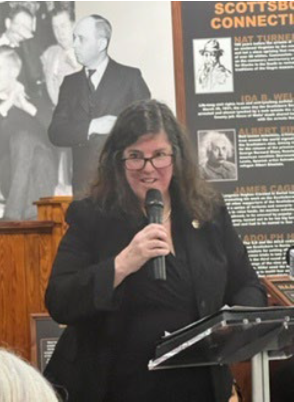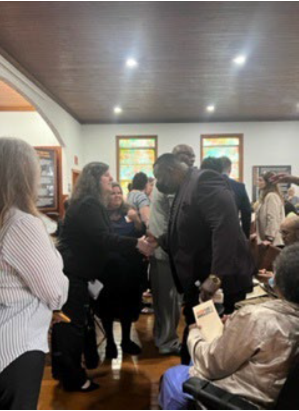Archival Notice
This is an archive page that is no longer being updated. It may contain outdated information and links may no longer function as originally intended.
The Scottsboro Boys: Legacy of Injustice
I recently had the honor of speaking at the reopening of the Scottsboro Boys Museum in Scottsboro, Alabama. The museum commemorates the lives and legacy of nine young men who became international symbols of racial injustice in the 1930s when they were tried, convicted, and imprisoned for rape—a crime they did not commit. Honoring their stories provides an opportunity to reflect on the progress we've made—and the work that still needs to be done to ensure racial equity across the justice system.
This story began with nine boys on a train (the youngest just 13 years old). Two were brothers; the rest did not know each other. The one thing they all had in common was hopping a freight train in 1931 in search of work—that, and the fact that each was African American.
That train ride altered their lives forever. Two white women on board falsely accused them of rape. Eight of the teenagers were found guilty by all-white juries in Scottsboro and sentenced to death. The teens grew into men while enduring decades of courtroom trials, convictions, retrials, and incarceration—and the associated physical trauma and mental anguish—even after one of the women admitted they made up the rape claim to avoid getting in trouble with the police. Collectively, the "Scottsboro Boys" spent a total of 130 years in Alabama jails and prisons for a crime they did not commit.
Over the ensuing decades, each of the eight teens—now men—was released from prison, but that false rape accusation effectively derailed their lives. Some returned to prison. Others suffered health problems, violence, suicide, and early deaths.
Their names were Clarence Norris, Jr., Charlie Weems, Ozie Powell, Andrew Wright, Leroy Wright, Olen Montgomery, Willie Roberson, Haywood Patterson, and Eugene Williams.
As we remember their lives and the repeated injustices they suffered, it's important to renew our commitment to true equality in America's justice system.
Today, youth of color still face racially disparate treatment in our justice system. They are often treated more harshly than their white counterparts, even when charged with similar offenses. They are more likely than their white peers to be arrested, referred to adult court, and placed in out-of-home facilities. In fact, in 2020, Black youth were 2.3 times more likely than white youth to be arrested.
Advancing community safety is a critical component of the work we do at the Office of Juvenile Justice and Delinquency Prevention. But placing young people in the adult criminal justice system does not reduce crime. In fact, research shows that youth prosecuted in adult court are more likely to commit future crimes when compared with youth whose offenses are handled through the juvenile system. The Scottsboro teens' legacy compels us to recognize and confront racial inequities in the juvenile justice system and ensure just treatment for every youth.
During my visit to Alabama, I met with Alabama state officials about the juvenile justice system and services for justice involved youth. Progress has certainly been made in improving youth services. Yet, there is much more work to be done throughout the country to create a juvenile justice system that is fair and equitable while advancing community safety.
The experience of the Scottsboro boys highlights a legacy of injustice in the U.S. justice system. The only way to truly alter our future is to learn from our past. We must admit and face the wrongdoings that were committed, and we must commit to never repeating these mistakes. Efforts to better address the inequalities in our justice system continue today.
Our work will not be complete until every youth receives equitable treatment in every phase of the justice system. We cannot rest until the color of a young person's skin no longer colors the outcome of their case.




